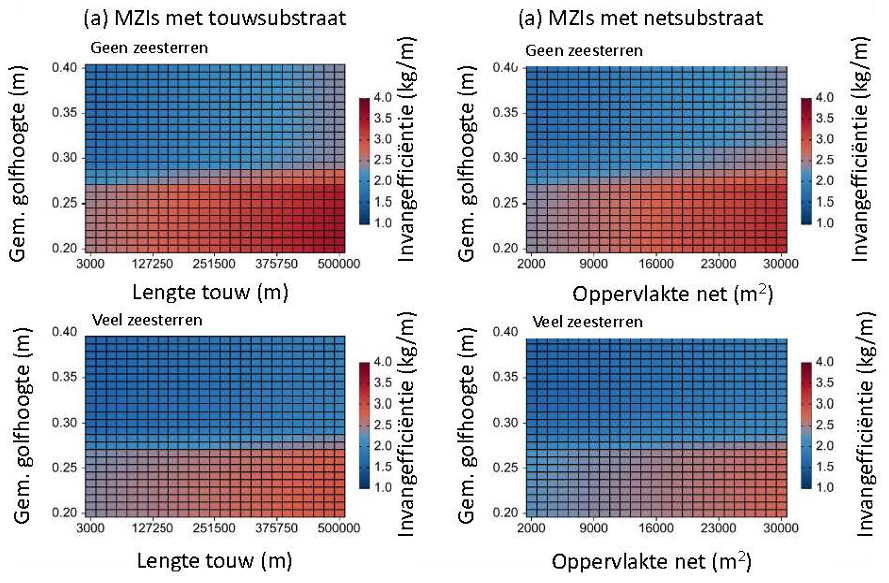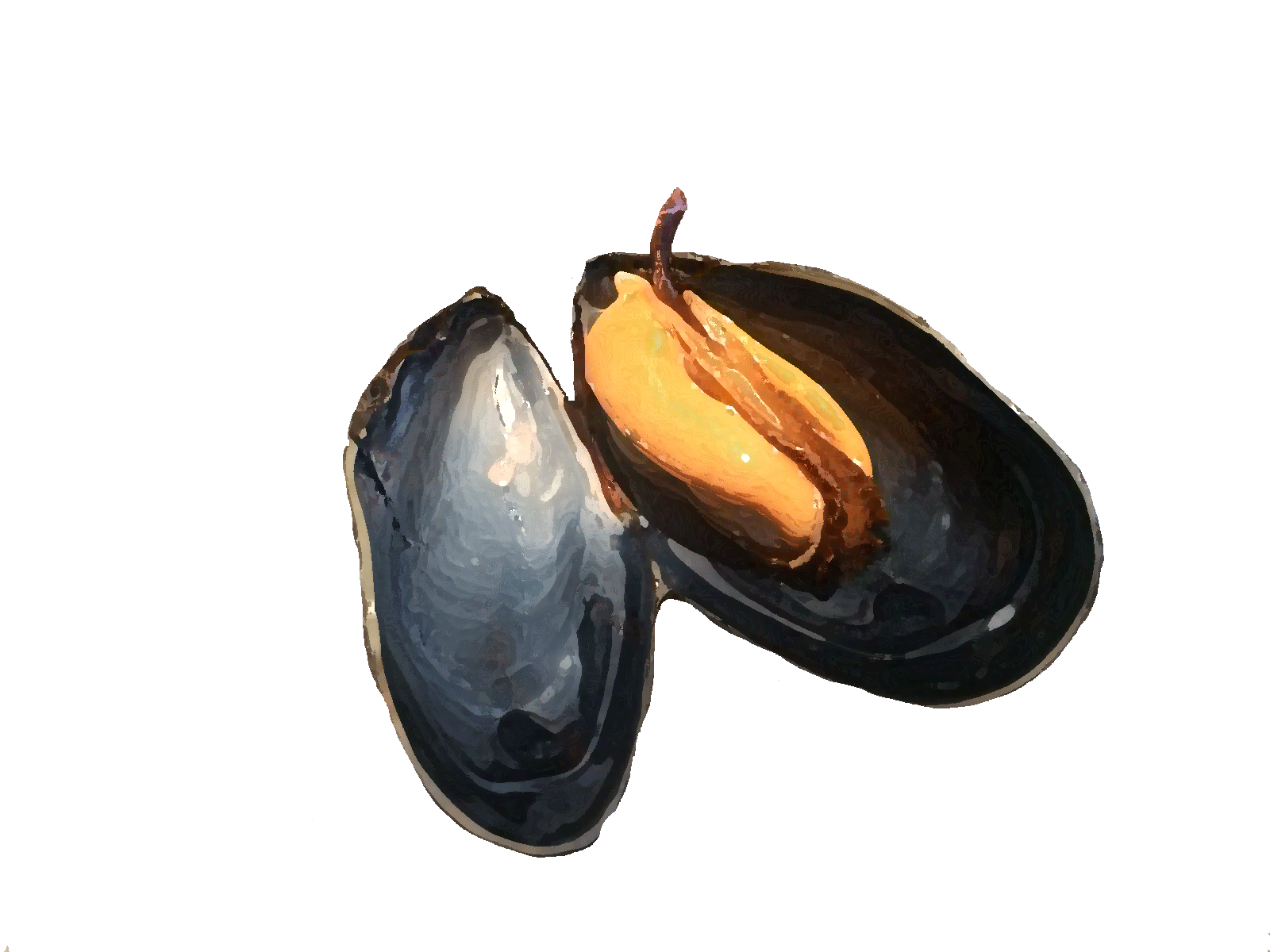Mussel farming depends on the availability of young mussels, or mussel seed. Originally, all mussel seed was collected from natural mussel seed banks and then transferred to specially designated plots for further growth into consumption mussels. From the beginning of the 21st century, experiments have been conducted with floating installations in the water, called Mussel Seed Capture Systems (MZIs), to capture mussel seed. In 2009, agreements were reached between the government, the mussel industry and conservation organizations to phase out traditional harvesting of mussel seed from natural banks as part of sustainability efforts. This has led to a significant increase in the use of MZIs. Here, both systems with continuous lines under buoys and systems with nets under pipes are used as regular structures (see examples in Figure 1).

Fig. 1 (a) Geographic distribution of sites where MZIs have been deployed. (b) Mussel seed attached to a rope. (c) MZIs with rope substrate. (d) MZIs with net substrate.
Practice shows that the efficiency (harvest per meter of substrate) of MZIs can vary between different years and locations. By analyzing an 11-year dataset (2011-2021), with information on installation, use and harvest of MZIs on 63 plots and at eight different locations (see Figure 1), we identified differences in efficiency across locations and years. Here, efficiency is expressed as the amount of mussels harvested per meter of substrate.
The efficiency of MZIs varies across sites and over different years, with no clear increasing or decreasing trend (see Figure 2a). MZIs based on rope did show, on average, better harvest efficiency than MZIs based on nets (see Figure 2b, c).

Fig. 2 Variation in the efficiency of MZIs between sites and years, shown separately for (a) all types of MZIs, (b) rope-based MZIs and (c) grid-based MZIs – see Figure 1 for location abbreviations.
In addition, we examined whether the efficiency of MZIs is affected by the presence of larvae and the rate of settlement. To do this, we analyzed data from previous field surveys that took place at four sites (Bur, Gat, Zep and Mal; see Figure 1b) from 2017 to 2020. Surface water samples of 100 liters were collected during each survey to count the larvae present. Cotton nets (0.15 m²) were also used to estimate the deposition rate of shellfish larvae.
Contrary to our expectations, the analysis showed that the average number of larvae during the reproductive season did not significantly affect the efficiency of the MZIs (see Figure 3a). Nor did we find a relationship between the number of shellfish larvae that settled and the settlement timing and efficiency of the MZIs (see Figure 3b).

Fig. 3 Harvest efficiency of MZIs at 4 sites from 2017-2020 in relation to (a) the presence of mussel larvae and (b) the establishment of mussel larvae
Finally, we combined harvest dates from MZIs over the past 11 years with data available from the environment. Using machine learning, we tried to identify the main factors that determined the efficiency of the MZIs during that period.
Of Of the 13 variables examined, 1) the type of MZI (ropes or nets), 2) the size of the substrate (rope length or net area), 3) average wave height and 4) the presence of starfish emerged as the most important factors. MZIs with ropes caught more mussel seed per unit of substrate than MZIs with nets (see Figure 4). Both types of MZIs showed similar sensitivity to environmental conditions, with consistently higher eye efficiency observed in areas with lower mean wave heights and with less presence of starfish (see Figure 4).

Fig. 4 Harvesting efficiency of rope-based (a) and grid-based (b) MZIs for several key factors, namely MZI type, presence of starfish, mean wave height and substrate size (rope length and net area), predicted by the machine learning model.
Opportunities to maximize efficiency seem limited. The main opportunities seem to lie in pre-assessing site suitability based on average wave heights and on sensitivity to the presence of starfish. The developed machine learning model can provide valuable information in this regard. Moreover, the harvesting efficiency of MZIs can be further improved by making strategic choices regarding the type and size of MZIs. Larger systems with more substrate seem more robust. Here, of course, it is essential to carefully weigh the associated benefits and costs, since efficiency is not the only parameter that determines the success of a method.


